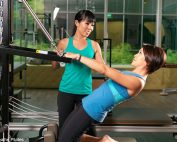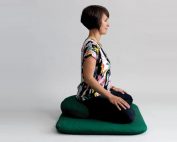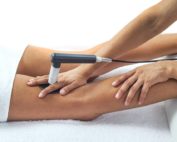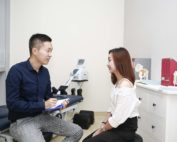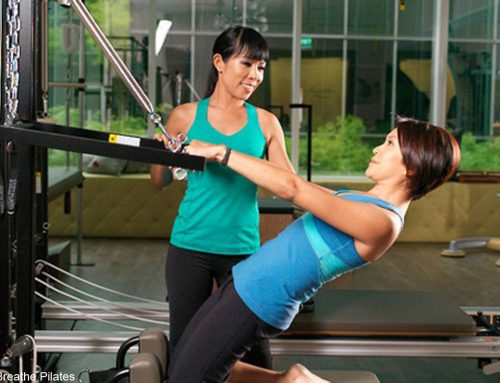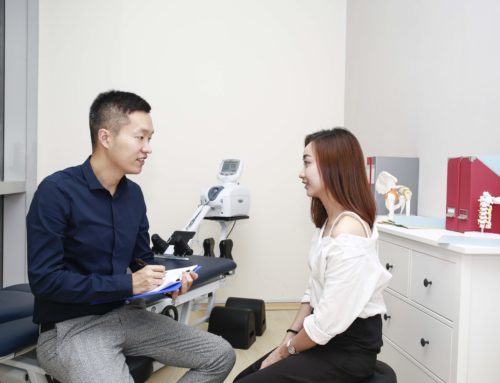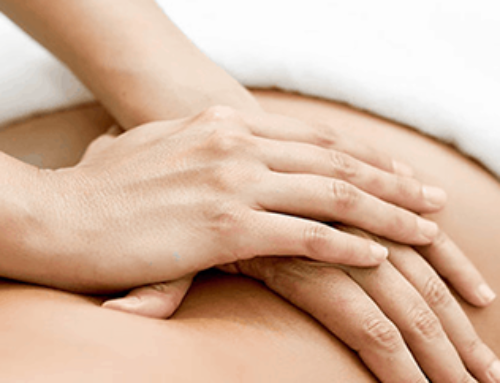What does correcting your posture feel like?
By Sarah Lewis, Meditator
9-minute read
While I was working with Steven, I went on a 10-day meditation retreat in Singapore. Meditation requires you to sit with your spine straight with correct posture, because you are sitting for long periods of time, in this case 10 hours a day. If you do not sit efficiently, you will be in more pain and you are unlikely to be able to sit through to the good parts of meditation that involve vibrations all over your body. And so it was that I went from the typical hunched office worker to someone with perfect posture in just 10 days. I wouldn’t advise this for everyone, it was physically demanding and I was a healthy adult. I suggest working with Steven, especially if you have pain or injury. However, as I was meditating throughout the posture correction process and observing the sensations closely, as is required by the Vipassana meditation technique, I had a front row seat to the effects that poor posture had had on me. Steven thought you may be interested to find out what I experienced.
Experience #1: Strengthening the posture muscles in my back
This is the part where Steven’s help will be longer but gentler! By Day 2 of sitting straight, about 10-20 hours of sitting, I had shooting pains up and down my back. This was the spinal erector muscles, and other postural muscles building their strength and pushing their limits. It was very painful, and many of us struggled that day. By Day 3 however, the shooting pains had gone, and I was left with the uncomfortable ache that you get when you have exercised or done sports. If you are injured, experiencing pain, or older than I am (34 years old), you will need a gentler approach or may end up doing yourself more damage.
Experience #2: Nerve sensations returning to my neck, upper chest, and lower jaw
Nerve tweaks
In the middle of Day 3 as the new correct posture began to settle in, I began to get tweaks across my lower jaw and neck. I guessed that this was the nerves beginning to work properly again, which Steven confirmed for me later. None hurt, but they were strong. This was accompanied by a de-numbing of the whole area from my cheekbones to my upper chest, which in turn revealed a whole array of sensations that had been covered by the numbness. A numbness I hadn’t realised I had!
No more numbness
My throat, which I’d had no idea was so affected, doubled or tripled in its level of sensation. While sitting and meditating with my eyes shut, it mentally felt like it was out by my chin. Every time I swallowed it felt like I was trying to swallow a whole egg. I thought my swallows were echoing around the silent meditation hall and disturbing everyone. On Day 4, when I swallowed my food, I could feel the detail of the texture of the food as it went down my throat. I’d always been able to feel something, but nothing so textured. It felt odd, and has since calmed down, although my sensation there is much improved. It feels more vital and present than before and the sensation is still a bit stronger.
Passing pain in upper chest
My upper chest, from my collar bone to about an inch below it, from one shoulder to the other, felt like it was pulled painfully tight. It ached. I mentally watched it for about a day until it disappeared into a deep healing itch. Later on, when I asked Steven about it, he told me that it is common in forward head syndrome, sometimes known as “text neck”, to experience tightness and pain across the front of your neck as your muscles try their best to hold up your head, which is off the centre line of your spine when you have poor posture. It seems I have been carrying about that pain without realising.
Experience #3: My sinuses blow up and my shoulders ache
My sinuses become balloons
Then on Day 5, my sinuses felt like they were blowing up like a balloon and trying to fly out of my face. Inside the air felt very cold. I had a constant stream of phlegm and kept having to clear my throat or cough. The sensation was like anti-pressure, as if there had been pressure in my sinuses for so long, that when it returned to normal, my brain experienced it as strong expansion (hence the balloon sensation). I have always had a post-nasal drip, that plagued me particularly at night. If I lay flat on my back, I would get coughing fits, and I would need to prop myself up on two pillows to get a good night’s sleep. That night, I slept for the first time in years flat on my back with one pillow, something I’ve been able to do ever since. The balloon sensation has also calmed down now, although I am still enjoying a greater sense of lightness and air flow.
Shoulder bursa pain subsides
On Day 6, I began to feel a strange hazy shooting ache centred in the front, back and point of both my shoulders. This is the shoulder bursa, it turns out, and it often aches if the nerves that come out of your spine at the bottom of your neck are pinched. This trapping of the nerves in your neck is common with poor posture. This lasted a while and eventually subsided after about 2 days.
Forearm and hand twinges
On Day 8, I got nerve twinges in the tips of my fingers on my left hand and very faint shooting pain sensations in my palms and forearm. Steven tells me that this is likely due to another nerve that was pinched by the vertebrae at the bottom of my neck. This has now passed, but curiously, if I sit slumped in an armchair, or on a sofa working on my computer, this sensation returns – like a small alarm bell that I need to correct my posture.
Experience #4: Ears click and neck straightens
Ear pressure changes
On Day 9, I began to feel what was going on in my ears. Your ears are attached to your nose and throat area by a tube called the Eustachian Tube, which equalizes (or fails to equalize) pressure in your ears. You often feel it as your ears popping when you are on an aeroplane and it takes off. These have been clicking since my posture correction, especially when I move my head backwards, from slightly forward back to in line with my spine, and sometimes I think my hearing is a little muffled. I suspect my brain is still getting used to the changes there. I have also felt a fluttering in my right ear, which I understand is one of the muscles that supports my ear drum that is spasming. I expect these to settle in time as everything else has.
Tiny hump disappears
In addition to all this, the spinal vertebrae at the bottom of my neck where it meets the top of my immobile Thoracic spine (Steven tells me that this is known as C7), used to stick out a lot. I wasn’t especially embarrassed by it, but I noticed that no one else had one. When I showed it to people they’d say “oh yes, there is a lump, that’s a bit weird.” It seems that this was because my slight forward head syndrome from poor posture made my neck stick out rather than curve up. Steven tells me that it was the beginning of a condition called Dowagers Hump (I am 34 years old!) and over time can become a full-on hump. My grandma has one of these and she can’t turn her head left or right. Now my posture has corrected, this has basically disappeared and reduced to normal.
I have taken to occasionally using a rolled-up towel as a neck pillow, and lying flat on my back without a pillow during the night to keep my posture in place. I recently began to feel the two strong neck muscles that stretch from your collar bone to your jaw behind your ears really relax and soften. It’s quite a pleasant sensation. These muscles often affect your Eustachian tube functioning, so I’m curious to see how that plays out.
What benefits have I experienced from correcting my posture?
No more night coughing
The tension has dissipated from my neck and jaw, and I do believe I am more relaxed because of it. I have not had a coughing fit at night since my posture was corrected, and so I am able to sleep in a healthier sleeping position on my back. When I twist my spine in a yoga pose that requires me to look behind me, it no longer crackles all the way up.
More confident looking
Appearance-wise, I look slimmer and more elegant because of the elongation of my waist. I also look more confident because my shoulders are rolled back rather than forward and I am not slouched over. The small hump at the back of my neck has gone. My body feels stronger and this boosts my confidence, which along with the more powerful posture, probably means I look more confident too.
Improved singing
The softening of tension in my neck has improved my singing voice. I sound less strained when I sing in my chest voice. I also sound more powerful in mixed voice and can transition from chest to head voice more smoothly. This was unexpected.
Stronger running
Since I got back, I have noticed that my knees that used to twinge when I ran, no longer do. Perhaps I am crediting my new posture too much now, but I can’t help thinking that it may have played a part. A stronger base to work from must help with sports.
Avoiding old-age pain
With my new sensitivity and knowledge, I have probably avoided: Dowagers Hump, shoulder pain, neck pain, back pain, chronic sinus problems (worse than what I was already experiencing), projecting timidity at work and in life. I will also keep pain at bay longer into my old age and I will likely continue to drive in my old age as I will be able to look over my shoulder. I feel that I have a good foundation for my running too.
What have I learned?
My poor posture didn’t show up as extreme pain, so I wasn’t prompted to visit Steven the way you might be. However, it seems that I had pain in my chest, shoulders, and hand, as well as poor functioning of my sinuses and throat. Curiously it seems that my body had papered over the pain and discomfort with numbness in its desperation to cope and keep moving. I have become quite astonished at what my body can do to paper over and cut out chronic pain and discomfort. If you ignore the signals, it’s all your body can do really. I am grateful for my left hand tingling every time I need to sit up straight because it will help me avoid this slow decay and crusty joints in the future.
If I had my time again, I wouldn’t ask that of my body, I would visit a Physiotherapist like Steven and gently ease my body out of its prison of bad habits and poor posture. He knows good ways to keep you moving that don’t demand so much of your body in the transition.
What next?
Please visit us at #03-08 SBF Centre near to Capital Tower or book a 20-minute video conference call with Steven Xuelong Qin (our clinic Director) for $20 to get a consultation and discuss treatment options for your pain or injury using our telehealth option (we will collect payment on booking). You can also try our TECAR machine of your injury or pain for just $88 for a 30-minute session.

